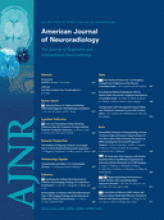We thank Dr. Schumacher for his interest and comments on our article entitled “Klippel-Trenaunay Syndrome and Spinal Arteriovenous Malformations: An Erroneous Association.”1 What is not surprising, and as we stated in the article, Klippel-Trenaunay syndrome (KTS) is still a field rife with controversy and disagreement. In his letter to the editor, Dr Schumacher made some valuable comments about KTS. However, we would like to take this opportunity to respond to some of the assertions with which we disagree.
There is no doubt that the diagnosis of overgrowth syndrome can be challenging, particularly when vascular anomalies are also present. Several factors (including the rarity of these diseases, the complexity of the clinical features, and some overlap between these conditions) lead to the diagnostic inaccuracy commonly noted in the published literature.2
The assertion by Dr Schumacher that “the statement capability of a meta-analysis … appears overtaxed” does not apply to our article. The analysis of the published cases of presumed KTS and spinal arteriovenous malformation (AVM) was a critical systematic review, not a meta-analysis. Meta-analysis, as defined by the Cochrane Collaboration, refers to statistical techniques in a systematic review to integrate the results of included studies; it should not be misused as a synonym for systematic reviews.3
Regarding the lack of clinical and radiologic evidence of KTS and spinal AVM in the cohort of the Vascular Anomalies Center at Children's Hospital Boston, we unreservedly agree with Dr Schumacher that including these data to support the theory of our article leaves unanswered questions. Nevertheless, the objective of the article was neither to prove a negative through inductive reasoning (ie, lack of this association in nature) nor to present incontrovertible evidence. We rather opted specifically to disprove the presence of positive evidence of such an association. We were cognizant not to claim infallibility in this work. The onus lies with the authors who report such an association to prove that their patients do have KTS and not any other vascular condition.
Regardless of whether one adopts a “lumper” or “splitter” approach to these disorders, it is imperative not to disregard the advances in knowledge in vascular anomalies. Defining KTS as a combination of slow-flow vascular malformations (capillary, lymphatic, and venous) in an overgrown limb4 allows for better understanding of the disease, for distinction from other disorders and for the emergence of newly described syndromes. The result of such careful diagnosis is that many patients who initially had the diagnosis of KTS turned out to have other conditions such as CLOVES syndrome, capillary malformation-AVM, isolated phlebectasia, extensive venous malformation, capillary malformation with overgrowth, combined vascular anomalies, Parkes-Weber syndrome (PWS), and so forth. These disorders have distinct clinical and imaging features, though unfortunately, the published literature still commonly lumps many of them under KTS. As an example, the table provided by Dr Schumacher compared the diagnostic features of KTS with those of PWS. Some of the information in this table seems to be based on older data that have been revised, updated, and changed in the light of the progress in understanding of these diseases (Table).
Comparison between KTS and PWSa
On the basis of the limited information provided regarding the patient presented by Dr Schumacher, it is difficult to draw a solid conclusion. The child has a pink port-wine stain on 1 leg and pelvic wall with enlarged vessels on the MR images. Because the child failed to meet the criteria of either KTS or PWS, Dr Schumacher, without a clear justification, picked some of the KTS features and others from PWS and called the disorder “Klippel-Trenaunay-Weber” syndrome. The type and distribution of the stain, the MR imaging findings, and the interval improvement between 1 and 5 years of age are not classic features of KTS, in addition to the arbitrary nature of the diagnosis. PWS is not “KTS with arteriovenous shunts.” KTS and PWS are 2 distinct disorders with different vascular components and natural histories. The use of nonspecific terms such as “angiomatous phakomatosis” and the triple eponym “Klippel-Trenaunay-Weber” syndrome is confusing and creates further nosologic uncertainty. Improper terminology can lead to the wrong diagnosis, mistreatment, and misdirected research efforts.5
In conclusion, we appreciate Schumacher's comments on our article, but we strongly disagree with the assertion that an association between KTS and spinal AVM has been unquestionably proved. The historical temptation to diagnose any large extremity with a vascular lesion as KTS is a common fundamental diagnostic fallacy and should be curtailed.
- Copyright © American Society of Neuroradiology












